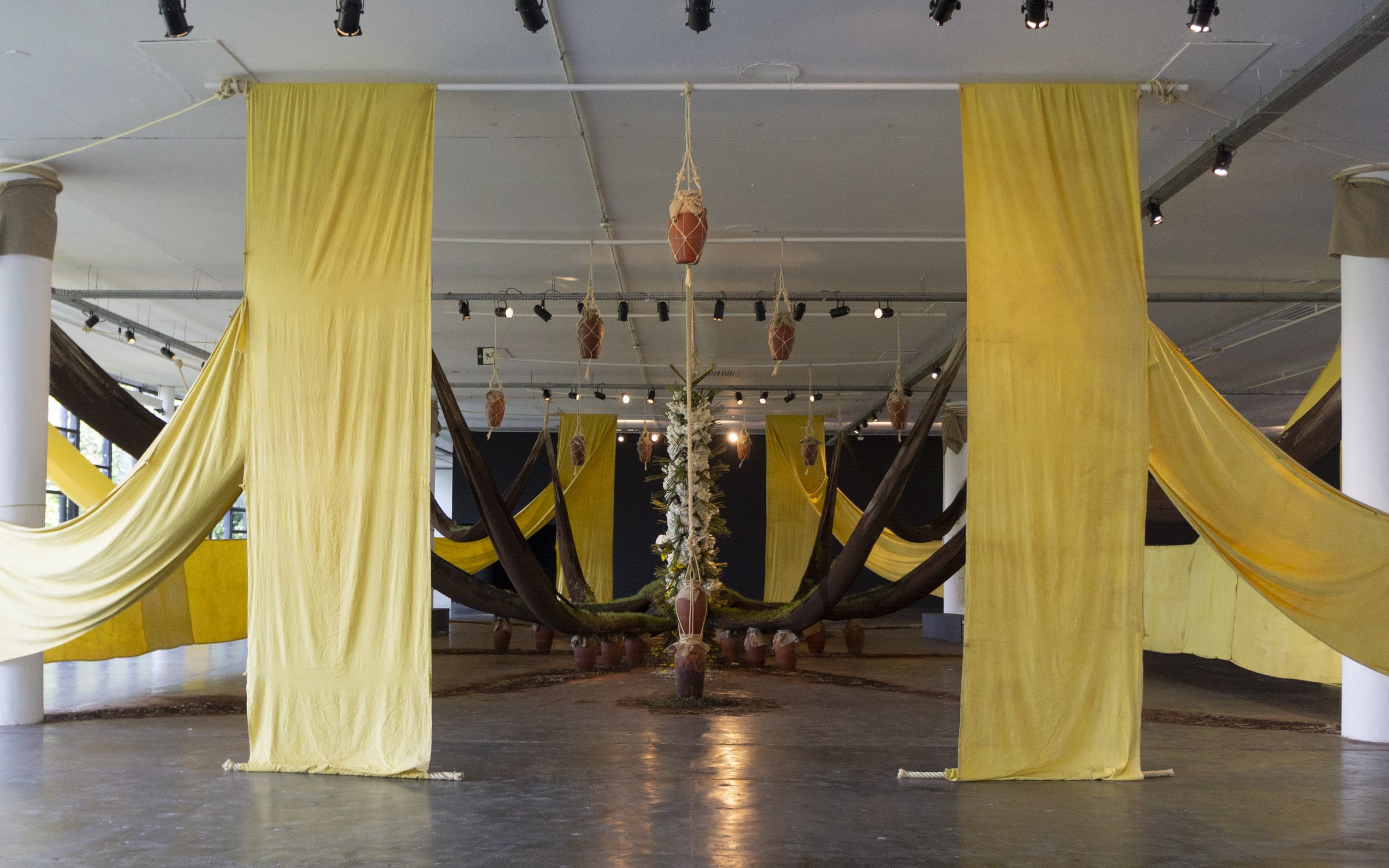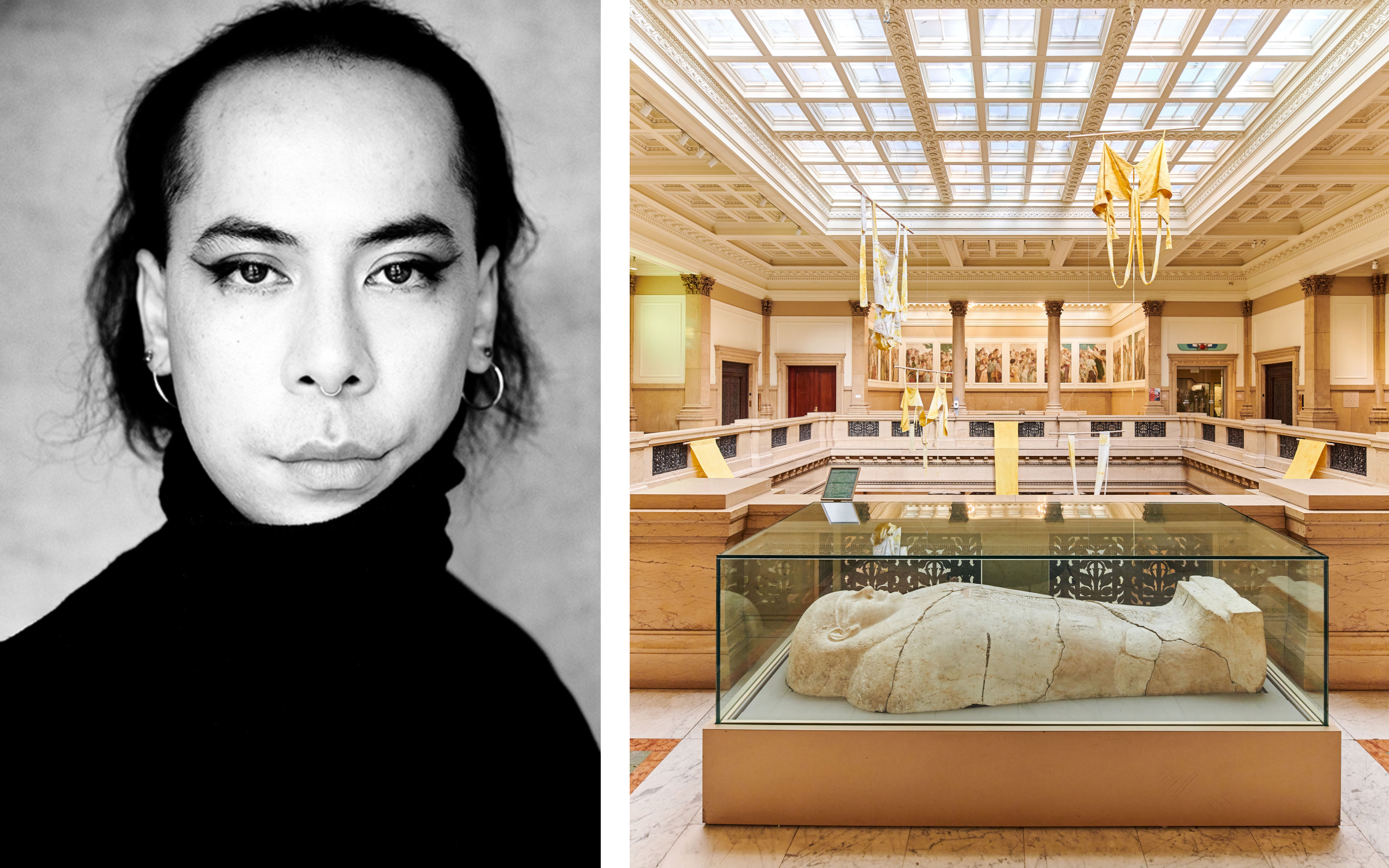In Outres (2023), Daniel Lie’s installation at this year’s São Paulo Art Biennial, swooping columns of soil-stuffed jute sacks hang suspended from the ceiling alongside blank banners dyed yellow with turmeric and adorned with thousands of cut chrysanthemums – symbols of mourning that will ultimately wilt and die over the course of the exhibition.

‘Everything in the installation is living and dying,’ says Lie, recounting the other unseen actors in the work: spores and seeds embedded in the soil that will bloom mushrooms and flora, as well as the airborne bacteria that will eventually inhabit the plant-based mixture offered in terracotta vases. As time passes, these ‘others’ will change the shape of the composition. (Outres is the gender-neutral alternative to the normally gendered Portuguese word for ‘others’.)
‘You can start to see the activity of life come to the surface of the vase, maybe as a mold or fermentation process,’ Lie adds. (You can smell it, too.) ‘All elements in the installation transmute in response to the pavilion’s climate and biological composition. And, after they’re done, they cannot be redone; they only exist in that moment.’

Like all of Lie’s multisensory, irreproducible installations, Outres is a collaboration with what the artist calls other-than-human protagonists. The composition of each living-and-dying work mutates and evolves according to their will: Frills of delicate pink oyster mushrooms might erupt from the hanging columns, as they did in ‘The Negative Years,’ Lie’s 2019 exhibition at Jupiter Artland sculpture park in Scotland, or insects might roost, as they did in Unnamed Entities, Lie’s 2022 installation at the New Museum in New York. As the artist’s first institutional project, the piece took some negotiation with manmade temperature and humidity controls.
Lie, who was born in São Paulo but is now based in Berlin, has since exhibited at the Carnegie International, Geneva Biennale, and Singapore Biennale in 2022. Throughout, the underlying implication in centering these ‘others’ is a question of empathy: ‘Is it possible that we humans see other beings with the same respect or personhood as we see other humans?’ Lie asks. The artist engages in an ongoing dialogue with living ecosystems – as well as with mycologists, posthumanist academics, and archaeologists studied in rituals of grieving – in order to center the invisible and rarely considered cohabitants of our ecosystem. For the trans-nonbinary artist, recurring themes of rot and fermentation represent transitional states of neither living nor dying which queer the accepted binaries of life and death, and of human and other.’

Daniel Lie is represented by Barbara Wien, Berlin, and Casa Triângulo, São Paolo. Their work will be on view in the upcoming editions of Paris+ par Art Basel with Barbara Wien, and Art Basel Miami Beach with Casa Triângulo.
The São Paolo Art Biennial, titled ‘Choreographies of the Impossible’, runs until December 10, 2023.
Janelle Zara is a freelance writer specializing in art and architecture. She is the author of Masters at Work: Becoming an Architect (2019). She currently lives in Los Angeles.
Published on September 13, 2023.
Caption for full-bleed images, from top to bottom: 1. Installation view of Daniel Lie's Unnamed Entities in New Museum, New York, USA, 2022. Photography by Dario Lasagni. Courtesy of the artist, Casa Triângulo and Galerie Barbara Wien. 2. Installation view of Daniel Lie's Grieving-Secret-Society in 58th Carnegie International, Carnegie Museum of Art, Pittsburgh, USA, 2022. Photography by Dario Lasagni. Courtesy of the artist, Carnegie Museum of Art and Galerie Barbara Wien.


